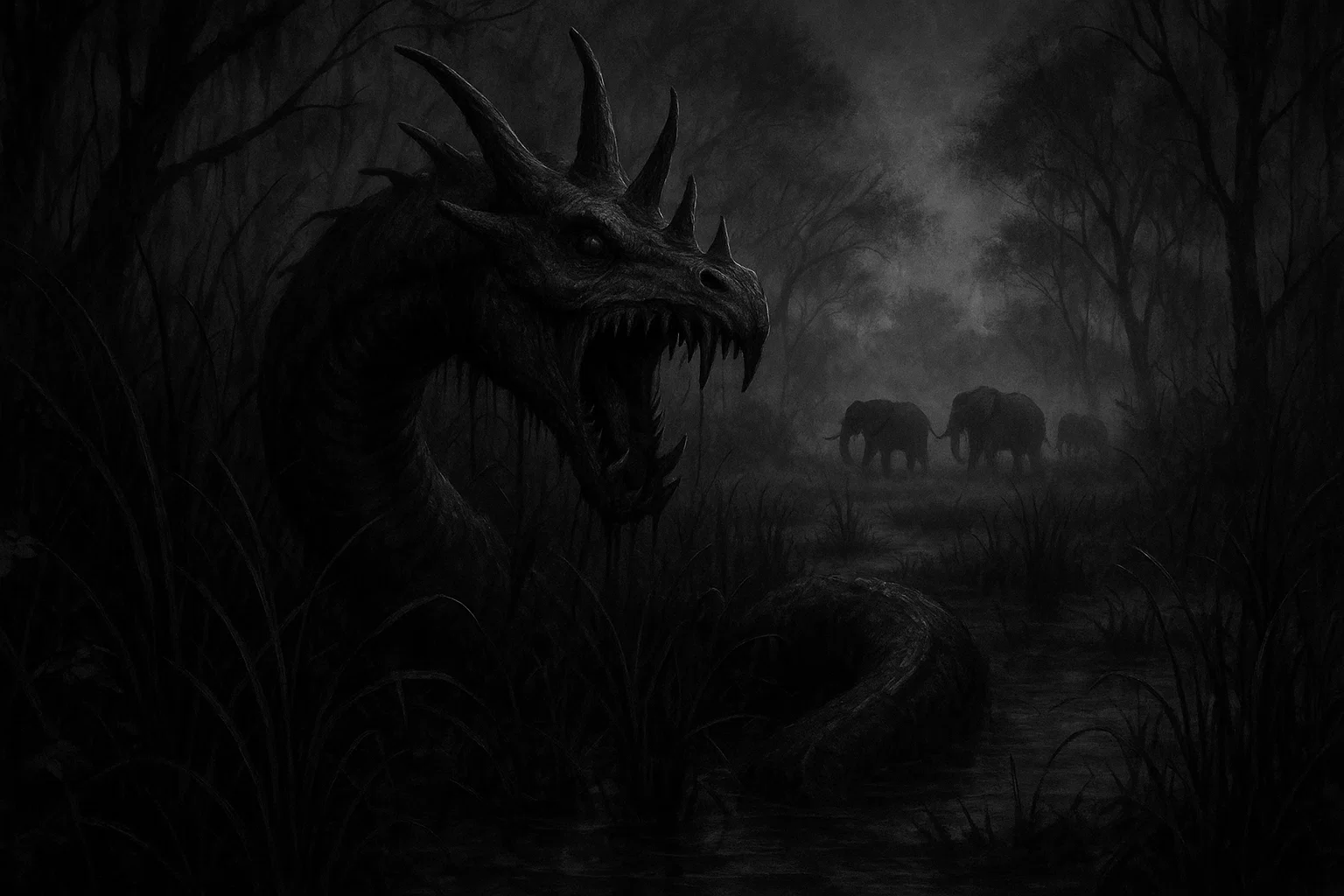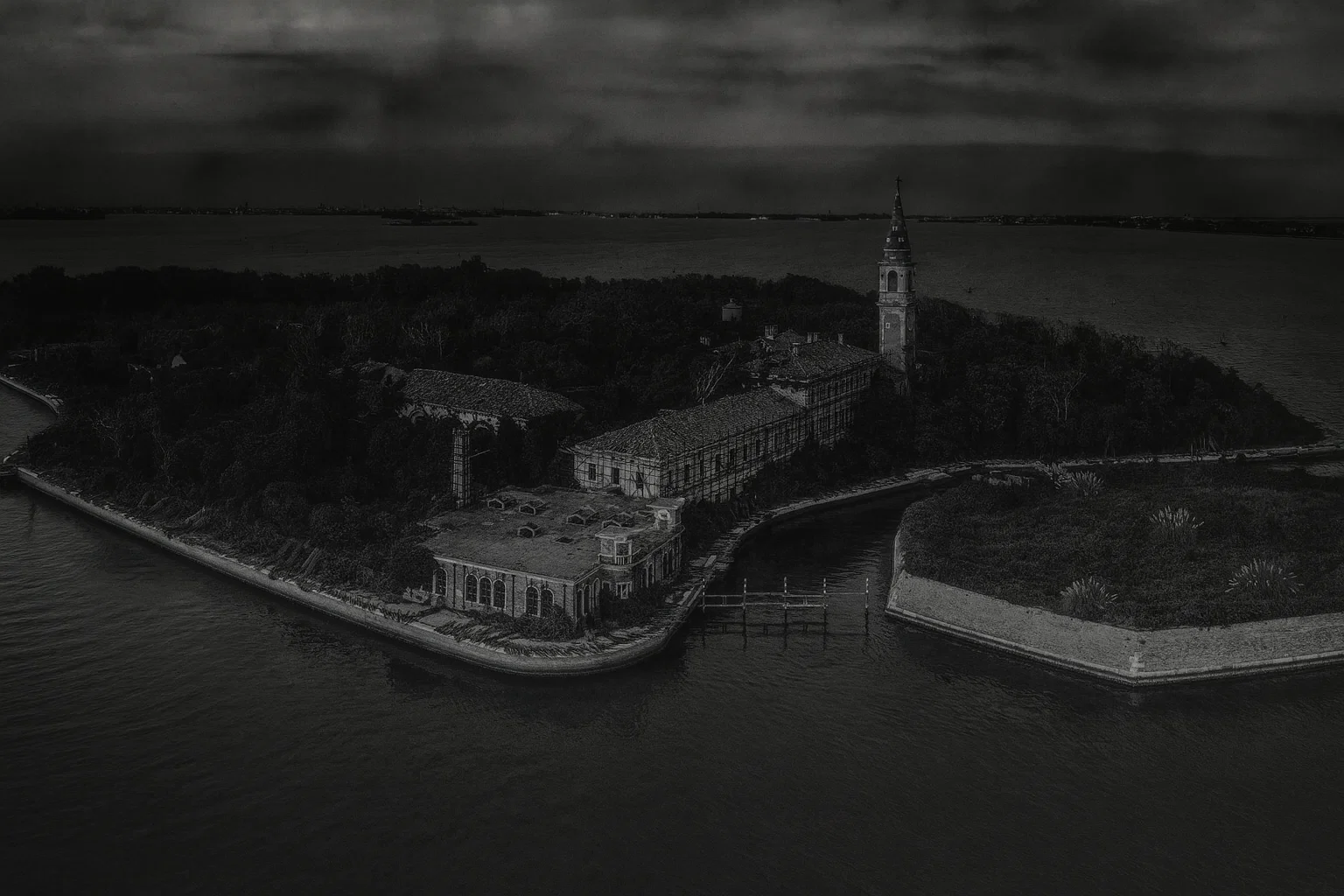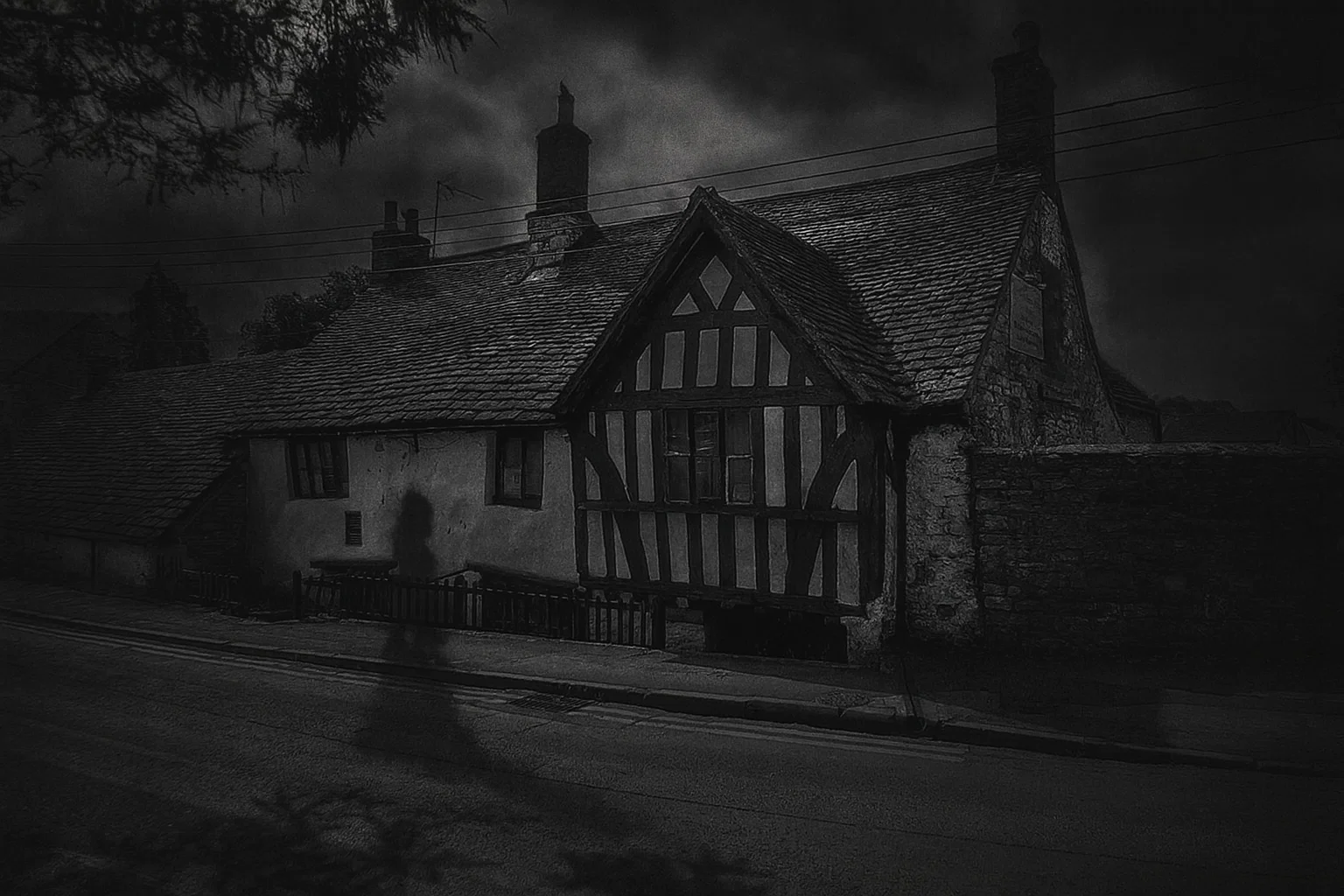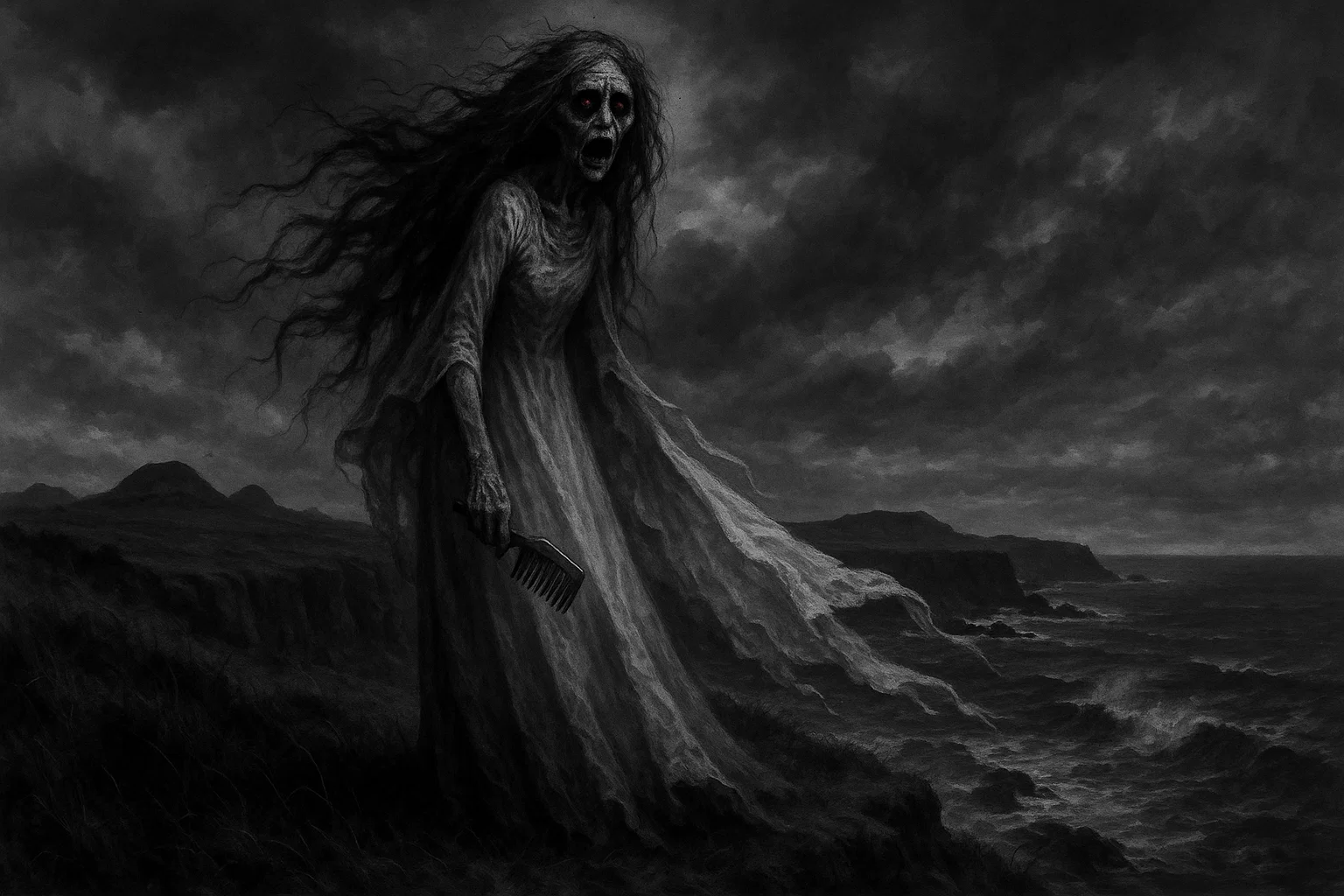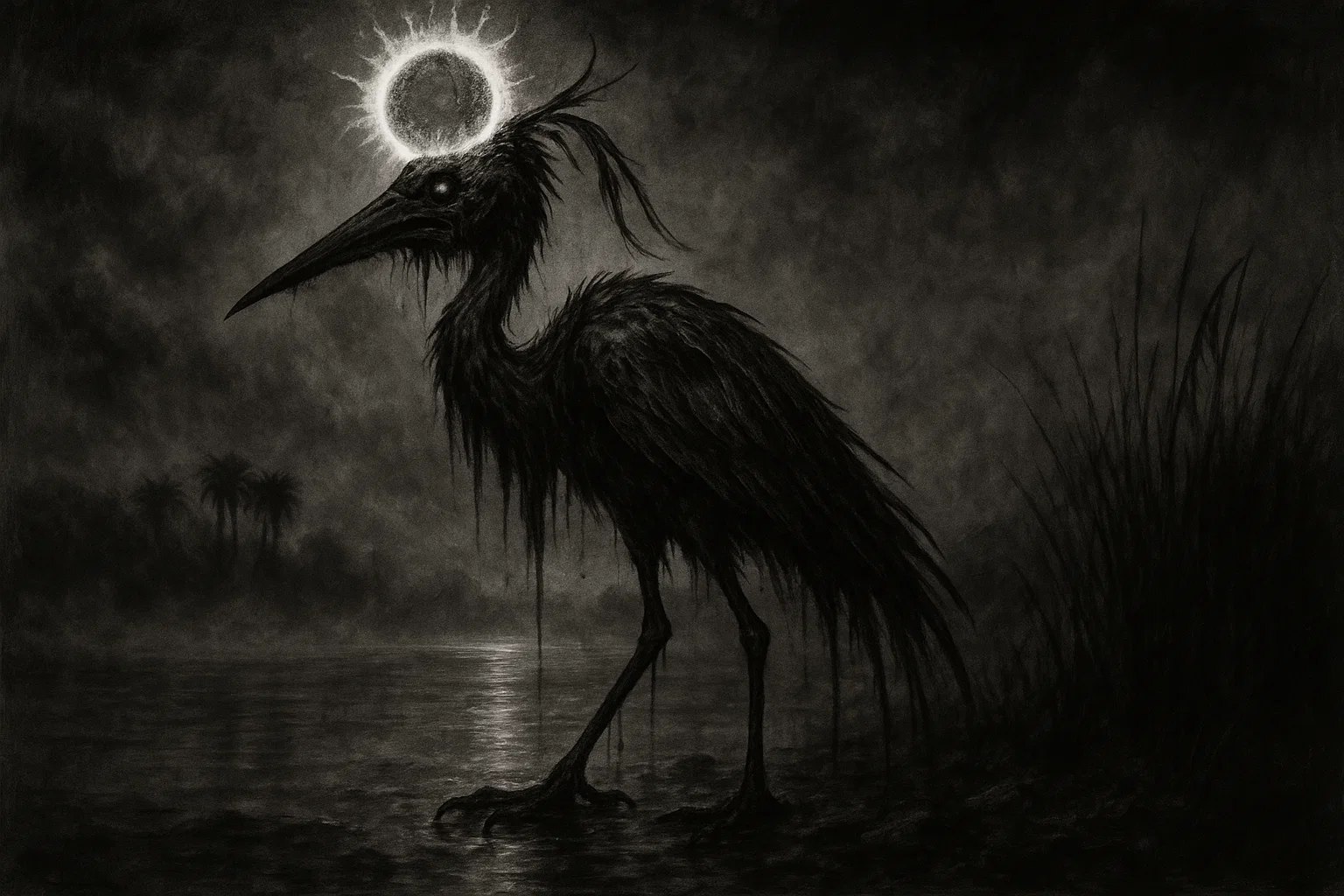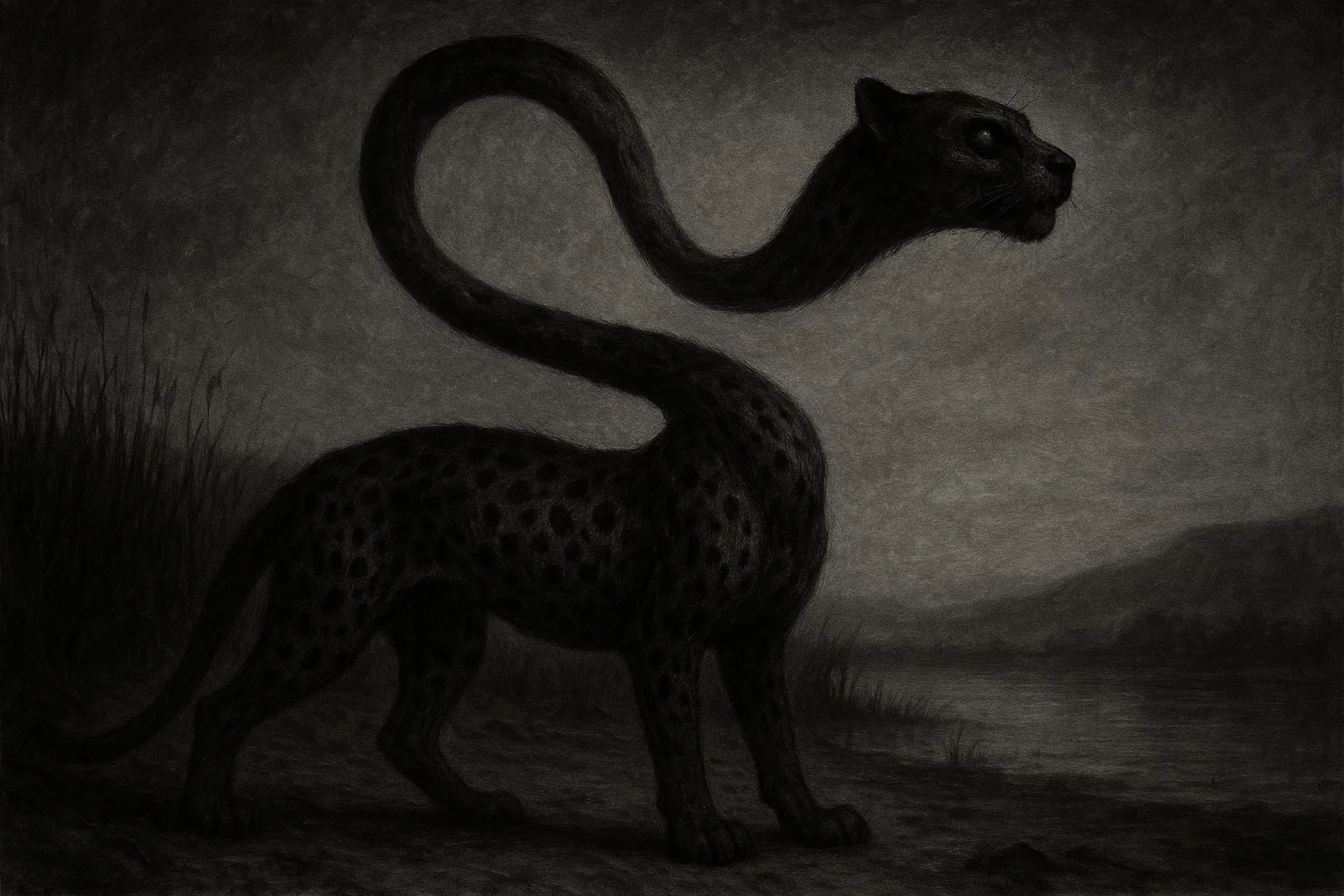In the shadowy swamps and winding rivers of West Africa, a chilling legend persists—a creature so terrifying that its very name evokes fear and fascination.
The Ninki Nanka, a mythical beast said to lurk in the murky waters of The Gambia, Guinea, and Senegal, has captivated storytellers, locals, and cryptozoologists for centuries. Described as a colossal, dragon-like reptile with a deadly gaze, this cryptid is woven into the fabric of West African folklore, serving as both a cautionary tale and a symbol of the unknown.
What is the Ninki Nanka? Is it a real creature, a cultural artifact, or something else entirely?
Summary
What Is Ninki Nanka?
The Ninki Nanka is a legendary cryptid deeply rooted in the oral traditions of West African tribes, particularly the Mandinka, Fula, and Wolof peoples of The Gambia, Guinea, and Senegal.
Known as the “dragon devil” or “snake devil,” the name Ninki Nanka likely derives from local languages, with “nanka” possibly meaning “snake” or “dragon” and “ninki” suggesting a supernatural or monstrous quality. This creature is feared as a harbinger of death, with folklore warning that those who gaze upon it may fall ill or die within days, weeks, or years.
In Gambian culture, the Ninki Nanka is often depicted as a guardian of sacred or dangerous places, such as swamps, rivers, and baobab trees. Parents use its legend to deter children from wandering into perilous areas, reinforcing its role as a cultural deterrent.
The creature’s mythology varies across tribes: some describe it as a vengeful spirit, others as a physical beast that emerges from the water under the cover of darkness.
Unlike other cryptids, the Ninki Nanka is uniquely tied to the spiritual beliefs of the region, with some stories attributing magical properties to its scales or suggesting it can grant superpowers to those who consume them.
Its elusive nature and lack of physical evidence have made it a subject of fascination for cryptozoologists and skeptics alike, positioning it as a bridge between folklore and potential zoological discovery.
You May Also Like: Who Is the Demon Amy (Avnas), the Fiery President of Hell?
What Does Ninki Nanka Look Like?
The Ninki Nanka’s appearance is a patchwork of fantastical and fearsome traits, pieced together from oral accounts and cultural storytelling.
While descriptions vary, common features paint a vivid picture of a monstrous, reptilian creature:
- Body and Size: The Ninki Nanka is said to be enormous, with estimates ranging from 30 feet (9 meters) to an astonishing 50 meters (164 feet) in length. Its body is often described as crocodile-like, covered in reflective, mirror-like scales that shimmer in moonlight, giving it an otherworldly aura. Some accounts suggest these scales are iridescent, shifting colors between green, black, and silver.
- Head and Neck: Witnesses frequently report a horse-like head with a gaping maw, sometimes adorned with three prominent horns—one on the forehead and two on the sides. Its neck is long and sinuous, resembling a giraffe’s but more serpentine, allowing it to rise menacingly from the water.
- Additional Features: Certain tales include a feather-like crest or mane running along its head or neck, adding to its mythical appearance. Some accounts attribute bat-like wings, glowing eyes, or the ability to spit fire, though these may be symbolic embellishments. Its tail is often described as long and whip-like, capable of creating large furrows in the earth.
- Distinctive Traits: The Ninki Nanka’s most chilling feature is its supposed deadly gaze, believed to curse those who meet its eyes with illness or death. Its scales are said to possess mystical properties, with some legends claiming they can grant strength or supernatural abilities when ingested. The creature’s size and reflective scales make it a formidable presence, blending traits of dragons, serpents, and crocodiles into a singular, terrifying entity.
Habitat
The Ninki Nanka is said to inhabit the swampy, riverine landscapes of West Africa, with a particular stronghold in The Gambia’s lush, perilous wetlands.
The creature is most closely associated with the Gambia River, a 1,120-kilometer waterway that winds through dense mangroves and muddy estuaries.
Specific sites include the mangrove marshes near Banjul, the capital of The Gambia, and the Kiang West National Park, a biodiversity hotspot. Reports also place the Ninki Nanka in Guinea’s coastal wetlands and Senegal’s Casamance region, where similar swampy environments exist.
The Gambia’s swamps are characterized by dense mangrove forests, with tangled roots and brackish water creating a labyrinthine habitat ideal for an elusive creature.
The Gambia River’s slow-moving currents and muddy banks provide ample cover, while baobab trees—believed to house juvenile Ninki Nanka—dot the landscape. These areas are rich in biodiversity, hosting crocodiles, monitor lizards, and pythons, which may contribute to misidentification.
The Ninki Nanka’s habitat aligns with its role as a cautionary figure. Swamps and rivers are inherently dangerous, with risks of drowning, quicksand, or encounters with predators. The creature’s legend may have evolved to discourage exploration of these treacherous areas, particularly by children.
Some stories suggest adults live submerged in water or mud, emerging only at night, while juveniles climb baobab trees, tying the creature’s lifecycle to its environment.
The Gambia’s swamps are steeped in supernatural lore beyond the Ninki Nanka. Local legends speak of jinn (spirits) inhabiting rivers and trees, often linked to unexplained disappearances or illnesses.
The Kiang West region, for example, is associated with stories of ghostly lights and spectral voices, which locals attribute to spiritual entities. While no other specific cryptids are tied to these exact locations, the broader West African region hosts tales of similar creatures, such as Guinea’s Dama Yagho, a serpent-like being said to guard sacred rivers.
These stories suggest a cultural framework where waterways are seen as portals to the supernatural, amplifying the Ninki Nanka’s mystique.
You May Also Like: Maple Hill Cemetery Haunting: Ghost Child Sightings and Eerie Legends
Ninki Nanka Sightings
The Ninki Nanka has been the subject of numerous alleged sightings, though most are anecdotal, passed down through oral tradition or reported second-hand:
| Date | Location | Witness(es) | Description |
|---|---|---|---|
| 1911 | Lake near Banjul, Gambia | Local community | Mirror erected to ward off creature after lake drainage; never seen again. |
| 1935 | River Gambia, Gambia | Locals (via Dr. Dalrymple) | Horse-like face, giraffe neck, crocodile body, ~30 ft long, seen at dusk. |
| 1943 | Abuko, Gambia | Papa Jinda | Huge creature with shining scales, ~40 ft long, near swamp. |
| 1947 | Abuko, Gambia | Papa Jinda | Second sighting; died two weeks later from mysterious pains. |
| 1993 | River Gambia, Gambia | Fishermen, locals | Black, serpentine shapes linked to fish deaths and illnesses. |
| ~2002 | Kiang West, Gambia | Lorry driver (second-hand) | Large creature crossed road during rains, causing crash and furrow. |
| ~2003 | Kiang West, Gambia | Momomodu (first-hand) | 50m-long, black/green, snake-like creature; witness fell ill but recovered. |
| Undated | Upriver from Kotu, Gambia | Jeweller’s uncle (second-hand) | Encountered creature; died within five years, linked to sighting. |
| Undated | South Beach, Gambia | Old wise man (second-hand) | Claimed to have killed creature with machete; buried on South Beach. |
| Undated | Undisclosed, Gambia | Undisclosed (second-hand) | Kangaroo-faced, fork-tongued creature in undergrowth; witness died. |
| 2006 | Kiang West, Gambia | Villager (first-hand, via CFZ) | 160ft-long creature with mirror-like scales, feather crest, seen in swamp. |
| Undated | Casamance, Senegal | Local fisherman (second-hand) | Serpentine creature with glowing eyes, seen at night in river. |
| Undated | Coastal Guinea | Village elder (second-hand) | Dragon-like beast with three horns, reported in mangrove swamp. |
1911: The Banjul Lake Incident
In 1911, a lake near Banjul, The Gambia’s capital, was drained for agricultural purposes. Locals, fearing the Ninki Nanka’s presence, erected a large mirror at the site, believing it would repel the creature due to its reflective scales.
According to oral accounts, the creature was never seen again in that lake, suggesting the mirror either banished it or confirmed its absence.
1935: Dr. Dalrymple’s Documentation
In 1935, Dr. Thomas Hardie Dalrymple, a British colonial doctor, recorded detailed accounts from locals along the Gambia River. They described a creature with a horse-like face, a giraffe-like neck, and a crocodile-like body, approximately 30 feet (9 meters) long.
One villager claimed to have seen it emerge from the river at dusk, its scales glinting in the fading light. Dalrymple planned a search but abandoned it due to heavy mosquito activity, leaving the sighting unverified but well-documented for its time.
1943 and 1947: Papa Jinda’s Encounters
Papa Jinda, a respected elder from Abuko, Gambia, reported two sightings of the Ninki Nanka. In 1943, he described seeing a massive creature with shining scales near a swampy area of the Gambia River.
He noted its horse-like head and long neck, estimating it at 40 feet long. In 1947, he encountered it again in the same area, this time closer. Two weeks later, he succumbed to mysterious pains and died, with locals attributing his death to the Ninki Nanka’s curse.
You May Also Like: The Last Ride at Midnight | Horror Story
1993: River Gambia Pollution Mystery
In 1993, a wave of fish deaths and human illnesses along the Gambia River sparked rumors of the Ninki Nanka. Locals speculated that the creature’s decayed remains, stirred up by river pollution, were responsible.
Fishermen reported seeing large, unidentifiable shapes in the water, described as black and serpentine, with reflective scales. While environmental factors like industrial runoff were likely the cause, the incident fueled belief in the Ninki Nanka as a vengeful water spirit.
2003: Momomodu’s Encounter in Kiang West
Around 2003, Momomodu, a park ranger in Kiang West National Park, reported a chilling encounter. While patrolling a swampy trail at dusk, he saw a 50-meter-long, black-and-green creature with a horse-like face and reflective scales.
He described it as snake-like, coiled in the undergrowth, with a crest of feathers on its head. After the sighting, Momomodu fell ill with skin lesions but was cured by an Imam’s herbal remedy.
2006: Centre for Fortean Zoology Expedition
In 2006, the Centre for Fortean Zoology (CFZ) launched the “J. T. Downes Memorial Gambia Expedition” to investigate the Ninki Nanka. The team, led by Richard Freeman, interviewed locals across the Gambia, collecting one first-hand account from a villager who described a 160-foot-long creature with mirror-like scales and a feather-like crest near a swamp in Kiang West.
Other testimonies included second-hand stories of a kangaroo-faced, fork-tongued beast. Despite extensive searches, the team found no physical evidence beyond a supposed scale, later identified as non-biological.
Evidence, Investigations, and Theories
The Ninki Nanka’s existence hinges on anecdotal reports, sparse physical evidence, and cultural narratives.
Physical Evidence
2006 Scale Incident: During the 2006 CFZ expedition, locals presented a supposed Ninki Nanka scale, described as a large, 2-pound fragment with a shiny, metallic appearance. Analysis revealed it was not biological, likely a piece of degraded celluloid film or plastic, debunking its connection to the creature. No other physical evidence, such as footprints, bones, or photographs, has been documented.
Environmental Clues: The 1993 Gambia River pollution incident, where fish deaths and illnesses were attributed to the Ninki Nanka, suggests environmental factors rather than a cryptid. No biological traces (e.g., DNA, scales, or carcasses) have been found to support the creature’s existence.
Investigations
1935 Dalrymple Inquiry: Dr. Thomas Hardie Dalrymple’s documentation of local accounts along the Gambia River provided early written records of the Ninki Nanka. His detailed descriptions of a horse-like, crocodile-bodied creature laid the groundwork for later investigations, though his search was abandoned due to environmental challenges.
2006 Centre for Fortean Zoology Expedition: The CFZ’s two-week expedition in The Gambia, led by Richard Freeman, aimed to verify the Ninki Nanka’s existence. The team interviewed dozens of locals, collecting one first-hand sighting and several second-hand accounts.
They explored swamps in Kiang West and along the Gambia River but found no tracks, droppings, or other evidence. Freeman concluded that the creature’s existence was unlikely, citing the prevalence of second-hand stories and cultural embellishment.
You May Also Like: Is Alabama Sasquatch Real? Shocking Sightings Revealed
Theories and Analysis
Several theories attempt to explain the Ninki Nanka legend, each with strengths and weaknesses:
Misidentification of Known Animals
Likelihood: High
Explanation: The Ninki Nanka’s description—large, reptilian, with a long neck and reflective scales—resembles animals like the Nile crocodile (Crocodylus niloticus), African rock python (Python sebae), or monitor lizard (Varanus niloticus), all native to The Gambia’s swamps. In low-light conditions, these animals could appear monstrous, especially to startled observers. The horse-like head and horns may stem from distorted views of crocodile snouts or python coils.
Supporting Evidence: The Gambia’s biodiversity supports large reptiles, and sightings often occur at dusk or in murky water, where misidentification is plausible.
Counterarguments: The Ninki Nanka’s reported size (up to 50 meters) far exceeds known species, and features like a deadly gaze or magical scales don’t align with real animals.
Fit with Sightings: This theory fits many accounts, particularly those describing serpentine or crocodile-like traits, but struggles with the more fantastical elements.
Cultural and Social Constructs
Likelihood: Very High
Explanation: The Ninki Nanka may be a cultural construct designed to explain natural phenomena (e.g., drownings, diseases) or enforce social norms, such as keeping children away from dangerous swamps. Its deadly gaze and association with death mirror other African folklore motifs, where spirits or creatures guard sacred or hazardous areas.
Supporting Evidence: The creature’s role in cautionary tales is consistent across tribes, and its sightings often align with areas of high risk. The 1911 Banjul mirror incident reflects cultural rituals to appease or banish spirits.
Counterarguments: While cultural stories explain the legend’s persistence, they don’t account for detailed, consistent descriptions across unrelated witnesses.
Fit with Sightings: This theory strongly aligns with the Ninki Nanka’s role in folklore and the lack of physical evidence, making it the most likely explanation.
Psychological Factors
Likelihood: Moderate
Explanation: Phenomena like pareidolia (seeing patterns in ambiguous stimuli) or collective hysteria could explain sightings, particularly in communities where belief in spirits is strong. Fearful expectations may amplify ordinary sightings into encounters with a mythical beast.
Supporting Evidence: Many sightings are second-hand or tied to illness and death, suggesting psychological amplification. The 1947 Papa Jinda case, where death followed a sighting, could reflect psychosomatic effects.
Counterarguments: First-hand accounts, like Momomodu’s in 2003, provide specific details that challenge simple misperception.
Fit with Sightings: This theory explains some sightings but struggles with consistent descriptions across decades.
Unknown Species
Likelihood: Very Low
Explanation: The Ninki Nanka could be an undiscovered species, possibly a surviving prehistoric reptile or a unique aquatic predator. West Africa’s unexplored swamps could theoretically hide such a creature.
Supporting Evidence: The Gambia’s remote wetlands are understudied, and large species like the coelacanth have been discovered in modern times.
Counterarguments: The ecological niche for a 50-meter creature is unsustainable in The Gambia’s swamps, which lack sufficient prey or space. No fossils, bones, or other evidence support this theory.
Fit with Sightings: The fantastical size and features (e.g., horns, fire-spitting) don’t align with known biology, making this unlikely.
Hoaxes and Exaggerations
Likelihood: Moderate
Explanation: Some sightings may be fabricated or exaggerated, particularly as stories are retold or influenced by external interest, such as the 2006 CFZ expedition. Local storytellers may embellish tales to attract attention or reinforce cultural beliefs.
Supporting Evidence: The prevalence of second-hand accounts and the non-biological scale suggest possible exaggeration. The lack of photographic evidence despite modern technology supports this view.
Counterarguments: Consistent descriptions across unrelated sightings, like those in 1935 and 2003, suggest some basis in observation.
Fit with Sightings: This theory explains the lack of evidence but not the persistence of detailed, culturally significant accounts.
You May Also Like: The Lobizon Legend: Werewolf, Curse, or Cryptid?
Comparison With Other Similar Cryptids
The Ninki Nanka shares traits with other aquatic or reptilian cryptids, particularly those tied to water or swampy environments:
| Cryptid Name | Location | Appearance | Habitat | Notable Sightings |
|---|---|---|---|---|
| Loch Ness Monster | Scotland | Long-necked, hump-backed, serpentine, 20-40 ft | Loch Ness | 1933, ongoing reports |
| Mokele-Mbembe | Congo Basin | Sauropod-like, long neck, small head, 15-30 ft | Rivers, lakes in rainforest | 1980s expeditions |
| Champ | Lake Champlain, USA/Canada | Serpentine, horse-like head, humps, 15-50 ft | Lake Champlain | 1609, 19th century |
| Ogopogo | Okanagan Lake, Canada | Serpentine, horse-like head, 40-50 ft | Okanagan Lake | Indigenous accounts, 1926 |
| Altamaha-ha | Altamaha River, USA | Serpentine, crocodile-like, 10-20 ft | Altamaha River | 1969, 1980s |
| Lusca | Bahamas | Octopus-squid hybrid, tentacles, 50-75 ft | Blue Holes, caves | Fishermen reports |
| Bunyip | Australia | Dog-like or horse-like, amphibious, varied size | Swamps, billabongs | Aboriginal legends, 1840s |
| Waitoreke | New Zealand | Small, furry, aquatic mammal, otter-like | Lakes, rivers | Maori accounts |
| Conger Eel-like | Global lakes | Giant eel, 10-30 ft | Lakes, rivers | Various lake reports |
| Dobhar-chú | Ireland | Otter-like, crocodilian, 7-10 ft | Lakes, rivers | 1722, 2000s |
| Mbielu-Mbielu | Congo Basin | Dinosaur-like, plates on back, aquatic | Swamps, rivers | 1970s reports |
Is Ninki Nanka Real?
The Ninki Nanka remains one of West Africa’s most enduring mysteries, a creature that blurs the line between myth and reality. While its legend is rich with vivid sightings and cultural significance, the absence of verifiable evidence—such as bones, tracks, or photographs—tilts the scales toward skepticism.
The 2006 CFZ expedition’s failure to find biological traces, coupled with the non-biological scale, suggests the Ninki Nanka is not a physical creature.
The most compelling explanation lies in its role as a cultural construct, a cautionary tale woven into the fabric of Gambian society to protect against environmental dangers.
Misidentification of crocodiles, pythons, or monitor lizards likely fuels sightings, amplified by cultural beliefs and psychological factors like pareidolia.
Yet, the Ninki Nanka’s power lies not in its zoological reality but in its ability to captivate, warn, and inspire awe. As a symbol of the untamed wilds of West Africa, it continues to thrive in the stories of those who fear and revere it.

